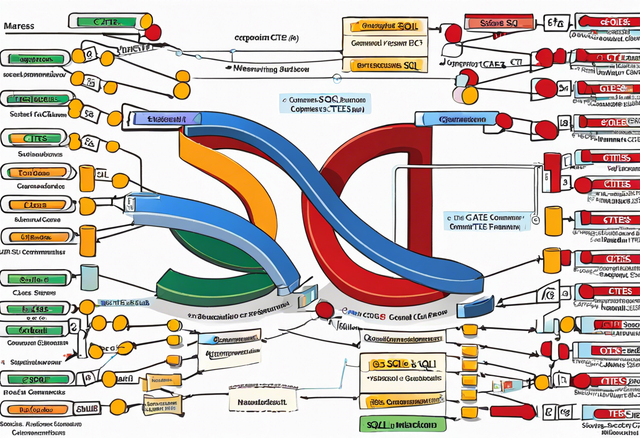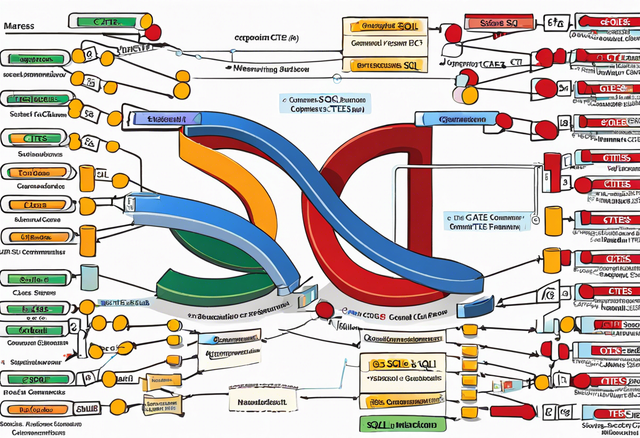Mastering SQL Common Table Expressions (CTEs): A Comprehensive Guide
 Dishant Singh
Dishant Singh
Mastering SQL Common Table Expressions (CTEs): A Comprehensive Guide
Nov 22, 2024 — 2 min read

Mastering SQL Common Table Expressions (CTEs): A Comprehensive Guide
Mastering SQL Common Table Expressions (CTEs): A Comprehensive Guide
In the realm of **SQL** (Structured Query Language), **Common Table Expressions (CTEs)** emerge as a powerful tool for structuring and simplifying complex queries. CTEs, often referred to as "with" clauses, act as temporary named result sets that facilitate modularity and reusability within a single query. This guide delves into the intricacies of CTEs, unraveling their purpose, syntax, and practical applications with illustrative examples.
Understanding the Essence of Common Table Expressions
Imagine a scenario where you're tasked with retrieving data that requires multiple steps, involving nested subqueries or complex joins. This is where CTEs shine. They allow you to break down such intricate queries into smaller, manageable segments, enhancing readability and maintainability. Essentially, a CTE defines a named, temporary result set that can be referenced within the same query block.
Syntax and Structure of CTEs
The fundamental syntax for defining a CTE is as follows:
WITH CTE_Name AS (
SELECT ...
FROM ...
WHERE ...
)
SELECT ...
FROM CTE_Name
WHERE ...;
Let's break down the components:
- **WITH:** This keyword initiates the CTE definition.
- **CTE_Name:** You assign a meaningful name to your CTE, allowing for clear identification.
- **AS:** Specifies that the following subquery defines the CTE's result set.
- **SELECT, FROM, WHERE:** The subquery itself that defines the CTE's data. You can include any valid SQL statements within this subquery.
- **Main Query:** The subsequent query that utilizes the CTE's result set, referencing the CTE_Name.
Illustrative Examples
Let's bring CTEs to life with some practical examples:
Example 1: Simple CTE for Employee Data
Assume you have a table named 'Employees' with columns for employee ID, name, and salary. You want to find employees with salaries exceeding a certain threshold.
Example 2: CTE for Calculating Total Sales by Region
Imagine you have a 'Sales' table with columns for region, product, and sales amount. You want to calculate the total sales for each region.
Example 3: CTE for Recursive Queries with Hierarchical Data
When dealing with hierarchical data, such as organizational structures or bill-of-materials, recursive CTEs come into play.
Benefits of Using CTEs
CTEs offer several advantages that streamline SQL query development:
- **Modularity and Reusability:** Break down complex logic into smaller, reusable chunks, making your code easier to understand and maintain.
- **Improved Readability:** CTE names provide semantic clarity, making queries more understandable for both developers and stakeholders.
- **Reduced Code Duplication:** Eliminate repeating code blocks, promoting efficiency and avoiding potential errors.
- **Enhanced Debugging:** Isolate and troubleshoot individual CTEs, simplifying debugging processes.
Important Considerations
While CTEs are immensely beneficial, it's crucial to be aware of some key points:
- **Scope:** CTEs are scoped to the query block in which they are defined. They are not accessible outside that block.
- **Temporary Nature:** CTEs exist only within the execution of the query. They are not permanently stored in the database.
- **Performance:** In some cases, CTEs might introduce slight performance overhead, but this is generally offset by the benefits they provide.
Conclusion
CTEs empower you to write complex SQL queries with greater clarity, modularity, and maintainability. By understanding the fundamentals of CTE syntax and leveraging their advantages, you can elevate your SQL development efficiency and produce more robust and readable queries. As you continue your SQL journey, explore CTEs as a valuable tool in your arsenal for tackling intricate data manipulation tasks.
Subscribe to my newsletter
Read articles from Dishant Singh directly inside your inbox. Subscribe to the newsletter, and don't miss out.
Written by
Dishant Singh
Dishant Singh
Hello,I am a full stack web developer known for transforming ideas into stunning, interactive digital experiences. With a rich portfolio of successful projects, I specialize in creating visually appealing and highly functional websites.